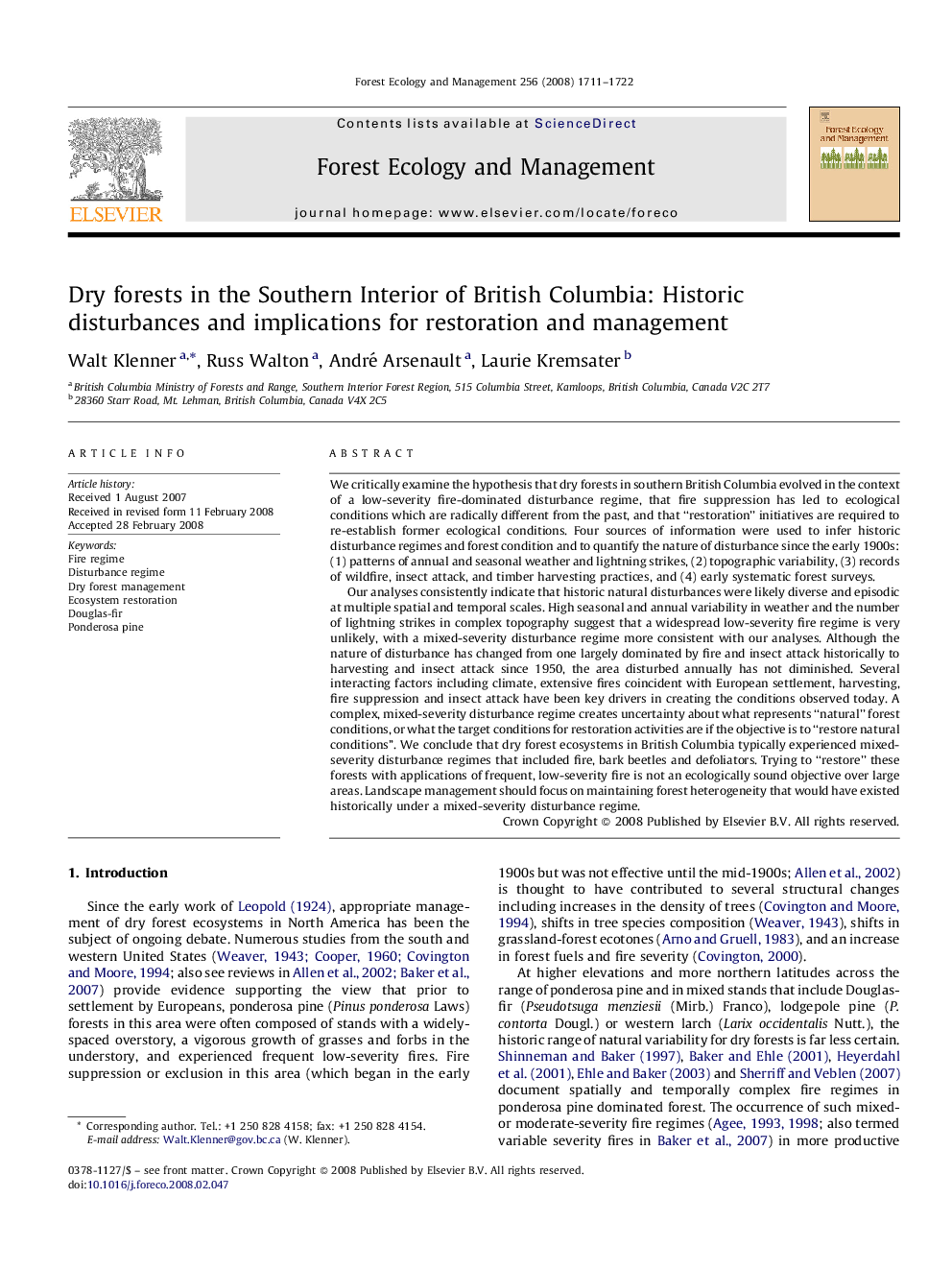| کد مقاله | کد نشریه | سال انتشار | مقاله انگلیسی | نسخه تمام متن |
|---|---|---|---|---|
| 89455 | 159342 | 2008 | 12 صفحه PDF | دانلود رایگان |

We critically examine the hypothesis that dry forests in southern British Columbia evolved in the context of a low-severity fire-dominated disturbance regime, that fire suppression has led to ecological conditions which are radically different from the past, and that “restoration” initiatives are required to re-establish former ecological conditions. Four sources of information were used to infer historic disturbance regimes and forest condition and to quantify the nature of disturbance since the early 1900s: (1) patterns of annual and seasonal weather and lightning strikes, (2) topographic variability, (3) records of wildfire, insect attack, and timber harvesting practices, and (4) early systematic forest surveys.Our analyses consistently indicate that historic natural disturbances were likely diverse and episodic at multiple spatial and temporal scales. High seasonal and annual variability in weather and the number of lightning strikes in complex topography suggest that a widespread low-severity fire regime is very unlikely, with a mixed-severity disturbance regime more consistent with our analyses. Although the nature of disturbance has changed from one largely dominated by fire and insect attack historically to harvesting and insect attack since 1950, the area disturbed annually has not diminished. Several interacting factors including climate, extensive fires coincident with European settlement, harvesting, fire suppression and insect attack have been key drivers in creating the conditions observed today. A complex, mixed-severity disturbance regime creates uncertainty about what represents “natural” forest conditions, or what the target conditions for restoration activities are if the objective is to “restore natural conditions”. We conclude that dry forest ecosystems in British Columbia typically experienced mixed-severity disturbance regimes that included fire, bark beetles and defoliators. Trying to “restore” these forests with applications of frequent, low-severity fire is not an ecologically sound objective over large areas. Landscape management should focus on maintaining forest heterogeneity that would have existed historically under a mixed-severity disturbance regime.
Journal: Forest Ecology and Management - Volume 256, Issue 10, 10 November 2008, Pages 1711–1722